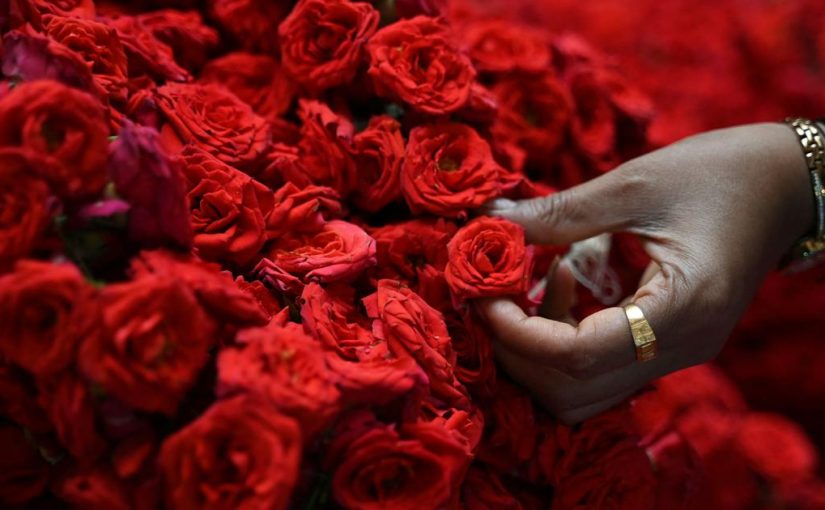By Nandita Haksar
The Uttarakhand Civil Code aims to strengthen “family” traditions, but will not stop Indians from holding hands across caste, religion and even borders.
UTTARAKHAND on February 7 passed the Uniform Civil Code that makes it illegal for couples to live together without registering within the first month of the start of their relationship. It is part of the government’s idea of discouraging “Western” values and strengthening Indian family traditions. But how is “Indian” even defined?
In many Adivasi and tribal societies in India, youngsters are often encouraged to live together before getting married. Adivasis are considered the original inhabitants of India.
But this is not about picking a quarrel with the powers-that-be. I am thinking of love in the digital age. After all, the prime minister in 2015 launched the Digital India mission – to make India a digitally empowered nation.
What will love look like in a digitally empowered nation?
Suppose the “couple” happens to be a woman and a holograph? Will they have to register their relationship? Could they get married? This is not all that out of the ordinary.
According to Alicia Framis, a Barcelona-born artist based in Amsterdam, “love and sex with robots and holograms are an inevitable reality.” Framis intends to “marry” a virtual partner: a hologram that she has designed to “satisfy all of her emotional needs.” “They are great companions and capable of expressing empathy,” said Framis. “Just as phones saved us from loneliness and filled the void in our lives, holograms as interactive presences in our homes can take it even further.”
IN China, too, women are turning to Artificial Intelligence for emotional support. An app called Glow, created by a Shanghai start-up, offers romantic and friendly human-robot relationships.
Tufei, from X’ian in northern China, told an AFP journalist that her “boyfriend,” a chatbot on the app Glow, knows how to talk to women better than a real man. “He comforts me when I have period pain,” she said. “I confide in him about my problems at work.”
Ideas of love and marriage are changing in India as well. A survey published in 2020 by the extra-marital affairs app Gleeden said that 55% of married Indians have had relationships outside of marriage. In 2022, Gleeden said it had registered 20 lakh users from India.
Belgian writer-singer Nele van den Broeck has a song that expresses the feelings of a new generation for whom there is a possibility for choosing partners from across the globe:
“?Darling, there’s something that I gotta say, oh my darling.
A thought has come my way today.
See darling, there’s seven billion people in the world.
So darling, the thought you’d be the one for me, my darling, my one and only destiny, see darling, you must admit, that sounds a bit absurd.
There could be someone who’s awaiting for me in Japan or in Germany.
The thought I would be yours exclusively is really rather scaring me.
I love you, but I Google other people.
I love you, but I Google every handsome boy I see.
I love you, but I’m restless, and it’s time for me to test us, so I google every possibility.
I love you, but I Google other people constantly.”
BUT at the same time, some things don’t change. When a friend had said she was looking for a suitable boy for her daughter on a matrimonial website, I kept quiet but was shocked. Now, there are hundreds of thousands of men and women listed on matrimonial sites. I also know of several couples who got married through these websites. One of the earliest websites was Shaadi.com, started in 1996, with the tagline: “We bring people together, love unites them.”
In 1997, MatrimonialsIndia.com was set up, claiming to have an ample database of the profiles of non-resident Indians, foreign, and prospective Indian brides and bridegrooms.
It promised “a perfect match” based on occupation, mother tongue, city, state, caste, religion and citizenship-status. Traditional “Indian” values rooted in patriarchy and caste got a boost with the digital age.
Similarly, the Netflix show Indian Matchmaking will give some assurance to government authorities, especially those backing the new law on registering live-in relationships. Couples seem to have decided to opt for arranged marriages, though the terms and conditions change according to the times.
Perhaps I could have longer, more intense conversations with a robot but I will not exchange a warm hug and a reassuring arm around my shoulder for a holograph, a robot or a marriage made by a matchmaker based on caste, class and material calculations.
I am rather old-fashioned. I love old-fashioned love that overcomes all barriers of caste, religion, class and nationality, the love that is celebrated in the oldest love stories where custom, tradition and taboo and their love challenged the patriarchal controls, the repressive norms and controls.
INDIA is a treasure trove of stories of love, from classical to folk and ancient to modern. Love has been celebrated for centuries and no laws have been able to control and suppress love. There are enough love stories in every corner of India and no law can stop us from reaching out and holding hands across caste, religion and community and even borders.
(Nandita Haksar is a human rights lawyer and award-winning author.)
Courtesy: The Scroll
